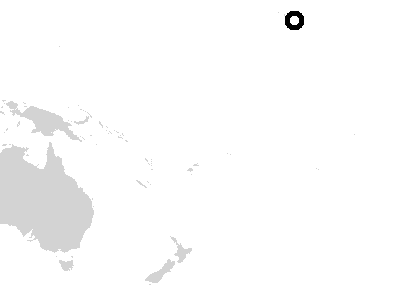
| www.CuriousTaxonomy.net |
|
The Flood in World Myth and Folklore
Pacific |
| © 2021 Mark Isaak |

All the land was once overflowed by the sea, except for the peak of Mauna Kea, where two humans survived. The event is called kai a Kahinarii (sea of Kahinarii). There was no ship involved.
Barrère, Dorothy B. The Kumuhonua Legends: A Study of Late 19th Century Hawaiian Stories of Creation and Origins, Pacific Anthropological Records number 3 (Honolulu, HI: Bishop Museum, 1969), 22; Frazer, 1919, 245.

Lalohona, a woman from the depths of the sea, was enticed ashore by Konikonia with a series of images. She warned him that her parents, Kahinalii and Hinakaalualumoana, would cause the ocean to flood the land so that her brothers, the pao'o fish, may search for her. At her suggestion, they fled to the mountains and built their home in the tops of the tallest trees. After ten days, Kahinalii sent the ocean; it rose and overwhelmed the land. The people fled to the mountains, and the flood covered the mountains; they climbed the trees, and the flood rose above the trees and drowned them all. But the waters began to subside just as they reached the door of Konikonia's house. When the waters retreated, he and his people returned to their land. This flood is called kai-a-ka-hina-lii.
Barrère, Dorothy B. The Kumuhonua Legends: A Study of Late 19th Century Hawaiian Stories of Creation and Origins, Pacific Anthropological Records number 3 (Honolulu, HI: Bishop Museum, 1969), 23.

In the earliest times in Hawaii, there was no sea, nor even fresh water. Pele came to Hawaii because she was displeased over her husband having been enticed from her. Her parents gave her the sea so she could bring her canoes. At Kanaloa she poured the sea from her head. It rose until it covered the high ground, leaving only a few mountains not entirely submerged. She later caused it to recede to what we see today. This sea was named after the mother of Pele, Kahinalii, because the sea belonged to her; Pele simply brought it.
Barrère, Dorothy B. The Kumuhonua Legends: A Study of Late 19th Century Hawaiian Stories of Creation and Origins, Pacific Anthropological Records number 3 (Honolulu, HI: Bishop Museum, 1969), 23-24.

The people had turned to evil, so Kane punished their sin with a flood. Nu'u and his company were saved by entering into the Great-Canoe, a large canoe roofed over like a house, which had been given them by Kane. The canoe contained a number of things, and Nu'u ruled over the whole like a chief. After the flood, these people repopulated the islands. The waters came up as a wicked brother-in-law of Nu'u was indulging himself in pleasure. He ran to enter the ark, but his calls were unheard by those inside. He prayed to the god Lono in the name of his sister but did not escape. He became angry at the first pair of people who had brought this trouble by bringing evil into the world, and he prayed to Lono that the whole earth be destroyed and that the first pair of people be brought back to life to witness the trouble they caused.
Barrère, Dorothy B. The Kumuhonua Legends: A Study of Late 19th Century Hawaiian Stories of Creation and Origins, Pacific Anthropological Records number 3 (Honolulu, HI: Bishop Museum, 1969), 19-21.

Nuu was of the thirteenth generation from the first man. The gods commanded Nuu to build an ark and carry on it his wife, three sons, and males and females of all breathing things. Waters came and covered the earth. They subsided to leave the ark on a mountain overlooking a beautiful valley. The gods entered the ark and told Nuu to go forth with all the life it carried. In gratitude for his deliverance, Nuu offered a sacrifice of pig, coconuts, and awa to the moon, which he thought was the god Kane. Kane descended on a rainbow to reproach Nuu for his mistake but left the rainbow as a perpetual sign of his forgiveness.
Barrère, Dorothy B. The Kumuhonua Legends: A Study of Late 19th Century Hawaiian Stories of Creation and Origins, Pacific Anthropological Records number 3 (Honolulu, HI: Bishop Museum, 1969), 19-21.; Kalakaua, David, The Legends and Myths of Hawaii (Rutland, VT: Charles E. Tuttle, 1972 (1888)), 37.

A high chief had two boys killed for playing with his drums. Their father Kamalo sought the help of the shark god Kauhuhu to get revenge. Kauhuhu told the man to build a special fence around his place and to collect 400 black pigs, 400 red fish, and 400 white chickens. Months later, Kauhuhu came in the form of a cloud. He caused a great storm which washed everyone on the hillside, except Kamalo and his people, into the harbor, where sharks devoured them.
Westervelt, W. D. Myths and Legends of Hawaii (Honolulu: Mutual Publishing, 1987), 110-116.
